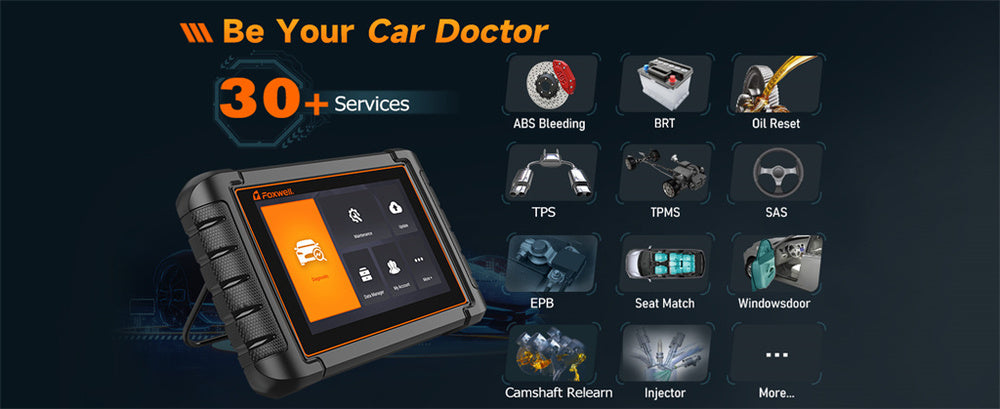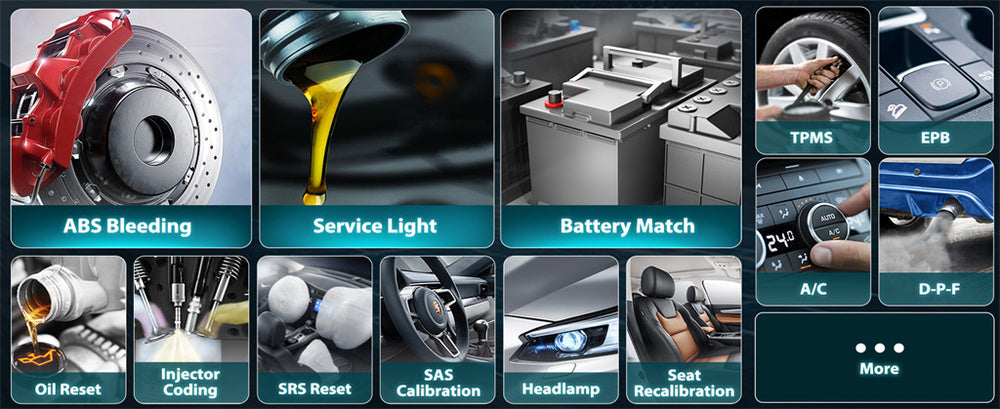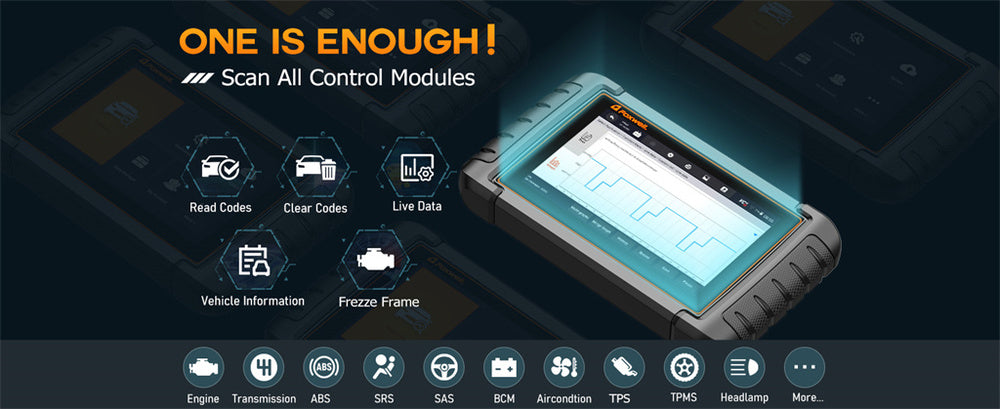Maintaining and diagnosing vehicles has become more sophisticated in today's technologically advanced world, making the automotive OBD2 scanner wireless an indispensable tool in maintaining vehicle health.
This device allows a smooth and effective method of keeping tabs on vehicle health while identifying potential issues before they turn into major ones.
We will delve deeper into these scanners' benefits and how best to use them effectively.

Benefits of OBD2 Scanner Wireless Accessory
Improve Mobility and Ease of Use with The Mobility Enhancing Chair System.
Wireless OBD2 scanners offer many advantages over wired models. Instead of connecting directly with your smartphone or tablet via Bluetooth or Wi-Fi, wireless models enable greater mobility when diagnosing vehicles.
This flexibility makes wireless models particularly beneficial to DIY enthusiasts and professional mechanics who must access different parts of a vehicle during diagnostics; in particular, users without cables will find this process more user-friendly and accessible to a broader audience.
Real-Time Data and Performance Monitoring Solutions available
One of the hallmark features of wireless OBD2 scanners is their ability to provide real-time data and performance monitoring, providing immediate feedback on parameters such as engine temperature, fuel economy and emissions levels.
Real-time monitoring helps identify problems before they escalate into more significant issues that might hinder vehicle operation - this proactive approach to vehicle care saves both time and money in the long run.
Cost-Efficiency and Preventative Maintenance.
Installing a wireless OBD2 scanner can significantly lower vehicle maintenance costs.
By diagnosing issues early, you can avoid costly repairs caused by neglectful issues.
Furthermore, these scanners allow you to clear trouble codes and reset the check engine light—potentially saving a trip to a mechanic!
Plus, performing regular diagnostics from home promotes preventative maintenance by ensuring minor issues are taken care of quickly before they become major.
User Experience and Accessibility.
Modern wireless OBD2 scanners are built with user experience in mind. Their intuitive apps easily guide users through the diagnostic process and often include detailed explanations and possible solutions for each displayed trouble code, making OBD2 scanners invaluable tools for all vehicle owners regardless of mechanical experience.
Wireless Scanners Are Emerging: Reasons and Trends
Reasons for Emergence
Several key factors drive the rise of wireless OBD2 scanners. Smartphone and tablet use has increasingly extended into vehicle diagnostics, providing greater user convenience when interfacing with scanners via mobile devices.
Second, recent advances in wireless technology make real-time diagnostics accurate and efficient.
Third, DIY vehicle maintenance has created a demand for intuitive tools for DIY enthusiasts without the need for professional training.
Grand View Research's market research supports the increase in popularity of wireless OBD2 scanners.
According to their report, which covers automotive diagnostic scan tools valued at USD 39.2 billion in 2020 and projected to experience compound annual compound growth rate (CAGR) of 4.5% from 2021-2028, wireless diagnostic tools stand out for being easy-to-use yet feature-rich. Wireless tools also tend to offer superior functionality than their wired counterparts.
Market Research Future predicts that the automotive diagnostic tool market will reach USD 54.36 billion by 2025, with wireless diagnostic tools being an integral part of this growth.
They attribute this growth to modern vehicles' increasing complexity, necessitating more sophisticated diagnostic tools that provide real-time data collection capabilities.
Wireless OBD2 scanners have become a consumer trend in recent years. According to a Global Market Insights survey, vehicle owners prefer wireless diagnostic tools due to their ease of use with mobile devices, particularly younger demographics, who are more familiar with smartphones and apps for various tasks.
Advantages of Non-Wireless OBD2 Scanners
Non-wireless OBD2 scanners such as the Foxwell NT809TS offer unparalleled stability and reliability that wireless models cannot match.
Connecting directly to a vehicle's OBD2 port ensures uninterrupted data transfer with reduced connectivity issues typically seen with wireless models; this stability is especially essential for professional mechanics who rely on consistent diagnostic performance from their scanner; reliable wired connections like those provided by Foxwell's NT809TS enable precise diagnoses with no signal interference issues or disruption.
Wire OBD2 scanners like the Foxwell NT809TS can often be easier and more durable than their wireless counterparts, without any complicated setup steps or additional components that might cause points of failure in its use.
Their easy plug-and-play nature makes them reliable choices for users who prefer quick plug-and-play devices with a plug-and-go solution and no wireless components requiring maintenance and upkeep, making this scanner more long-term usable than others like it on the market.
Comprehensive Functionalities.
The Foxwell NT809TS provides comprehensive diagnostic capabilities similar to those of high-end wired scanners.
It supports all OBD2 functions and offers advanced features like bidirectional tests, active tests, oil reset, EPB, BMS, DPF, and SAS services that enable thorough vehicle diagnosis and maintenance. With such extensive functionalities, this scanner is an invaluable asset for both professional mechanics and serious DIY enthusiasts.
Cost-Effectiveness
Non-wireless OBD2 scanners are more affordable overall than wireless models. Their lower price point makes them appealing options for budget-minded users, and wired scanners like the Foxwell NT809TS offer comprehensive diagnostic capabilities at a more accessible price point.
This makes these affordable scanners accessible to a range of vehicle owners without sacrificing diagnostic quality.
No Dependency on External Devices
One of the primary advantages of wired OBD2 scanners is their independence from external devices like smartphones or tablets.
For example, Foxwell's NT809TS boasts a built-in 7-inch touchscreen display and user-friendly interface, making diagnosis simple without needing additional equipment.
Its self-contained design makes this ideal for users who don't like being dependent on other devices - meaning your scanner will always be ready for use!
Furthermore, its built-in battery adds even greater portability and convenience for ease of use!
Compare and Understand Wireless OBD2 Scanners
Situational Advantages
Both wireless and non-wireless OBD2 scanners offer distinct advantages depending on the situation.
Wireless scanners may be preferable for users who prioritize mobility and convenience when diagnosing, such as using smartphones or tablets; wireless scanners also make quick checks easier on on-the-go diagnostics.
On the other hand, wired scanners tend to perform more reliably in environments that demand stability, such as professional repair shops where performance must remain consistent over time.
Performance and Convenience.
Performance-wise, both types of scanners provide effective diagnostic capabilities. Wireless scanners excel in convenience and ease of access with user-friendly apps delivering real-time data; however, they may experience connectivity issues in areas with poor signal or interference.
Wired scanners may be less portable due to cables, but their continuous performance makes them reliable solutions for thorough diagnoses.
Practical Applications
The choice between wireless and non-wireless OBD2 scanners depends on your intended use. Wireless scanners may be suitable for regular vehicle owners performing maintenance and quick diagnostics.
At the same time, mechanics who need mobility during repairs could benefit from real-time data with wireless scanners.
On the other hand, non-wireless OBD2 scanners may provide more stability and reliability in more in-depth diagnostics sessions; additionally, they are ideal in situations where interference might be an issue.
Comprehensive Guide on Utilizing OBD2 Scanner Wirelessly
Preparation: What You Need Before Beginning
Before using an OBD2 wireless scanner, ensure you have all the required tools and apps. Most scanners require a compatible smartphone or tablet and its diagnostic app—ensure it is charged and fully compatible with this version of the app before beginning.
Step-by-Step Usage Instructions
Locating and Connecting to an OBD2 Port: The OBD2 port is usually under the dashboard near the steering wheel. If you need help finding it, consult your vehicle manual.
Pairing Your Scanner to Your Device: Plugging the scanner into an OBD2 port, activating Bluetooth or Wi-Fi on your smartphone device and opening its diagnostic app will allow it to communicate with the scanner and pair together successfully.
Conduct Initial Diagnostics: Run initial diagnostics through your smartphone app once connected. It will scan for trouble codes and display real-time vehicle data.
Analyzing and Interpreting Codes: This app displays trouble codes, explanations, and potential solutions to help you better understand what issues are impacting your vehicle. Review these codes to gain a complete picture of any problems with its components.
Clearing Codes and Conducting Follow-Up Scans: Once any identified issues have been addressed, clear trouble codes and reset your check engine light using the app. Make follow-up scans to make sure the issues have been fully resolved.
Best Practices for Accurate Diagnosis
Regular Checks: Regular diagnostic checks can help keep your vehicle healthy and detect issues early.
Always Keeping Your Software Updated: For optimal performance and efficiency, regularly update both scanner firmware and diagnostic app software to take advantage of any available updates or fixes.
Consult Professionals for Complex Issues: Although an OBD2 scanner can offer valuable insights for complex or persistent problems, it may be wise to seek professional assistance from a mechanic or technician.
Essential Features to Look For in an OBD2 Scanner Wireless
Vehicle and Device Compatibility Information
Ensure your OBD2 scanner is compatible with your vehicle and smartphone/tablet device by checking manufacturer specifications to ensure it matches the make, model, and year of your car; additionally, ensure it works with its operating system.
Data Logging and Analytic Capabilities
Data logging and analysis features are essential when selecting an OBD2 scanner. These features allow you to track diagnostic data over time to help identify recurring issues and monitor long-term vehicle performance.
When looking for scanners, consider those offering detailed reports and export capabilities for further analysis.
Interfaces and App Features with User-Friendliness
An intuitive app interface is key to an optimal experience. Select a scanner with an app that features clear trouble code explanations, visual graphs, and step-by-step repair guides.
Such features simplify interpreting diagnostic data so that appropriate actions can be taken more quickly and easily.
Continuou Software Upgrades and Support are essential.
Regular software updates ensure your OBD2 scanner stays compatible with new vehicle models and diagnostic techniques. If possible, choose a brand that offers frequent updates and great customer support—that way, your scanner stays current and can continue providing accurate diagnostics.

Conclusion
An OBD2 wireless scanner is invaluable to modern vehicle diagnostics and maintenance.
With its convenience, real-time monitoring capabilities and cost-cutting benefits, this must-have tool should be in the arsenal of every vehicle owner.
By knowing how to utilize this device correctly, you can ensure your car remains in top shape while mitigating issues before they escalate further.
FAQs
What is an OBD2 scanner wireless?
An OBD2 scanner wireless is a diagnostic tool that connects to your vehicle's OBD2 port and transmits data to your smartphone or tablet.
How do I use a wireless OBD2 scanner?
Plug the scanner into your car’s OBD2 port, pair it with a compatible app on your device, and access real-time diagnostics.
What are the benefits of using a wireless OBD2 scanner?
Wireless OBD2 scanners offer convenience, real-time data access, and detailed vehicle diagnostics on your mobile device.




Leave a comment
This site is protected by hCaptcha and the hCaptcha Privacy Policy and Terms of Service apply.